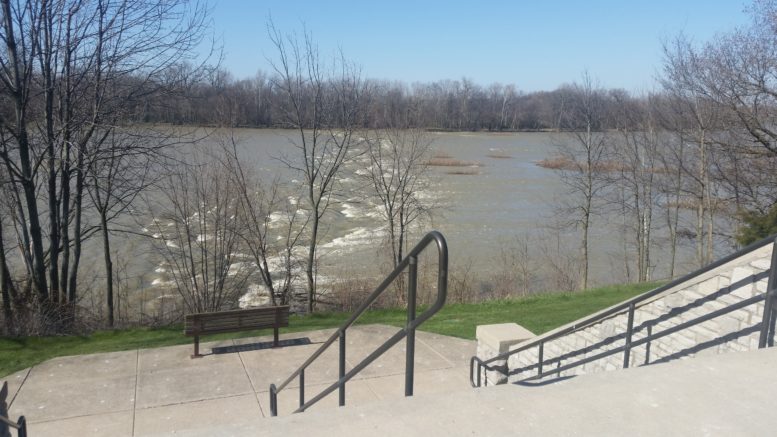By JAN LARSON McLAUGHLIN
BG Independent News
Wood County needs water from the Maumee River or Lake Erie, but there may be a way to cut out Toledo as the middle man, according to the Water Source Evaluation Study commissioned by the Wood County Economic Development Commission.
The study, presented to the Wood County Commissioners earlier this week was intended to ensure good water, at good rates, and give the county control over its own destiny, according to Jack Jones, of Poggemeyer Design Group which prepared the study.
The study accomplished its intended goals by not only identifying water options for Wood County, but also by showing Toledo that viable alternatives exist. But as with anything as complicated as supplying water to a region, “the devil’s in the details,” which have yet to be ironed out, Jones said.
The study identified three options for water in the northern part of Wood County, which now gets Toledo water distributed primarily by Perrysburg or the Northwestern Water and Sewer District. Those options are:
- City of Bowling Green’s water system with expanded reservoir space.
- Maumee River regional water plant with an intake and reservoir.
- Maumee River/Lake Erie Bayshore water intake, with a regional water plant and reservoir.
Working with Bowling Green’s water plant “has the best implementation potential,” the study stated. The city water treatment plant is a state-of-the-art existing operation that already uses membrane treatment technology. A future reservoir is already being considered, and land has already been purchased for a plant expansion, the report said.

All of the options would involve building a huge reservoir, possibly between 200 and 400 acres. Jones mentioned that some regions also use such large reservoirs as recreational sites.
Wood County customers have long questioned the price of Toledo water, but also began to doubt the quality after the water crisis in the summer of 2014, when people were warned to not drink water from Toledo due to the algal blooms.
“The Wood County Economic Development Commission believes the national attention on the water crisis brought into question the potential impacts on future economic development attraction and retention effects for Wood County,” a release on the study results stated.
The cost of Toledo’s water to users outside the city limits also prompted the study.
“There’s a big upcharge for the suburbs,” said Wade Gottschalk, executive director for the Wood County Economic Development Commission.
The urgency for the study has heightened because the local contracts for Toledo water expire relatively soon for Perrysburg and the Northwestern Water and Sewer District.
According to Jones, it will take between five and seven years to build a new water plant and intake system, so the study was needed now.
“It is no small effort to build a new water treatment plant,” with current requirements, Jones said. “There is no fast solution to this.”
The current Wood County usage from Toledo is approximately 5.5 – 6.8 million gallons per day with projected maximum usage to increase to 12.3 – 14.25 million gallons per day. To meet these demands, a 10 to 20 million gallons per day water treatment facility is required.
Jones and Gottschalk said very preliminary conversations have been held with Bowling Green officials about the city taking on the role of being a regional water provider. Bowling Green’s water was not affected by the algal blooms that crippled much of the region.
Bowling Green Mayor Dick Edwards and Director of Utilities Brian O’Connell said the conversations have been very preliminary. The city has already taken on the role of providing emergency water hookups to areas like Perrysburg in case another algal bloom crisis occurs, Edwards said.
“We don’t want to go through a situation like we did two years ago,” Edwards said.
The city would benefit by becoming a regional water supplier, Jones said, since the growth outside the city would help stabilize the rates in Bowling Green.
“They’ve got a lot to think about,” Jones said of Bowling Green officials.

